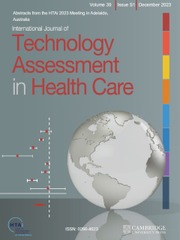Article contents
MODELING AGE DIFFERENCES IN COST-EFFECTIVENESS ANALYSIS
A Review of the Literature
Published online by Cambridge University Press: 25 May 2001
Abstract
Objectives: Cost-effectiveness analystsoften present cost-effectiveness results by age to help informdecisions about the use of an intervention. Yet it is not known howwell studies model the risks and costs associated with age. Wereviewed published studies to examine their modeling of agedifferences.
Methods: MEDLINE searches identified all cost-effectiveness analysespublished between 1985 and 1997 that included adults 50 years of age and older,were based on data for developed countries, and comparedcost-effectiveness ratios for adults of different ages or forinitiation of an intervention at different ages; 36 articles metthese criteria. They were reviewed to determine the extent to whichthey incorporated age-specific data. Studies that justified usingthe same data for all ages were counted as having varied the dataelement by age.
Results: All studies varied life expectancy by age. Most also variedthe incidence/prevalence of the target condition and the casefatality rate. Only 36% varied the effectiveness rate of theintervention by age. Costs were usually assumed constant: 42% ofstudies varied the cost of treating adverse effects and 17% variedthe cost of treating the target condition. Whether a data elementwas varied did not appear to be related to the pattern ofcost-effectiveness ratios by age.
Conclusions: Many studies have not modeled age differences insufficient detail to ensure that differences in cost-effectivenessratios by age are accurate and a sound basis for decisions. Ascost-effectiveness analysis becomes more widespread, analysts shouldstrive to incorporate more complete age-specific data.
Information
- Type
- Research Article
- Information
- International Journal of Technology Assessment in Health Care , Volume 16 , Issue 04 , October 2000 , pp. 1158 - 1167
- Copyright
- © 2000 Cambridge University Press
- 7
- Cited by

